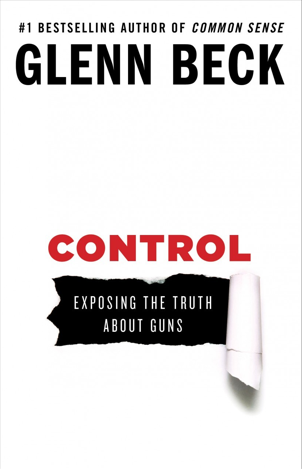
Glenn Beck’s latest book, Control: Exposing the Truth About Guns, is a disappointment on many levels. Beck cranks his books out so rapidly that he must utilize the skills and experience of experts to give the book credibility and substance. There’s nothing wrong with that, but it can be overdone. And Beck overdoes it. The best that can be said about the book is that it is short — just 200 pages. It can be read in less than two hours.
The first half of the book is similar to a recipe book — a Julia Childs for responses to liberal clichés. He has an awful lot of cooks helping him, and he tries to include recipes from everyone in the kitchen. In a word, he tries to do too much. His experts are certainly qualified: There’s Lt. Col. Dave Grossman, lawyer Stephen Halbrook, Professor John Lott, scholar David Kopel, and journalist Jacob Sullum. Each of them brings to Beck’s kitchen table useful and credible perspectives on the issue of gun control. Beck is careful from the beginning to note that gun control is people control, and each of his experts provides valuable insights into responding to various liberal myths promoted by people whom Beck calls “controllists.”
He answers successfully the myths, lies, and propaganda offered by the controllists and their media allies, including “The Second Amendment is about muskets,”, “Gun control works in other countries,” “40 percent of all guns are sold without background checks,” and so forth. For his readers who are likely to be familiar with, and sympathetic to, his responses, the book gets tiresome and sometimes confusing.
The second half of his book, however, is much better. He utilizes the expert on “killology”, Lt. Col. Dave Grossman (author of On Killing: The Psychological Cost of Learning to Kill in War and Society), who exposes the unsuspecting reader to a new awareness of how video games are turning young people into killers using the same technology the U.S. Army uses to turn its recruits into soldiers. Beck points out that something happened in about 1975:
Guns have always been around. In the 1700s, colonial Americans were the most heavily armed people in the world but homicides involving guns were rare. From the early 1970s through the late ‘90s the number of handguns owned by Americans increased 160 percent … yet over that period the murder rate declined [by] 27.7 percent.…
Availability of “assault” weapons was not a problem in the 1940s, ‘50s, or most of the ‘60s … yet, for some reason, no juvenile had ever committed a multiple homicide in a school until 1975…
Think about that. Five thousand years of recorded history. Five hundred years of gunpowder combat. One hundred and fifty years of repeating firearms. Yet, despite it all, no one can find a single case, anywhere in the world, where a juvenile committed a multiple homicide in a school prior to 1975. [Emphasis added.]
With Grossman guiding him, Beck makes the persuasive case that TV violence and now video-game “entertainment violence” are directly impacting American culture. He brings to the surface the little known facts of the Newtown shooter:
According to CBS News, the killer was “motivated by violent video games.” John Miller, a former FBI assistant director, said the gunman had a blacked-out gaming room where he immersed himself in the virtual reality of video games. “The only reality in that room,” Miller told CBS, “was him and that TV screen with his tactical shooting game.”
Beck spends the rest of the book reviewing strategies parents can use to protect their young children from the deadly violent effects of these instruction manuals for killing.
But precious little is said about the people and purposes behind the “controllists.” Beck talks statistics, which is the forte of Kopel and Lott. But the controllists don’t care. Beck talks about half-truths that the controllists use, but they don’t care. He uses history to remind his readers that governments kill their citizens when they are allowed to, but the controllists don’t care. Beck talks about murder rates in areas with little gun control versus areas where gun control is nearly complete, but the controllists don’t care. Beck talks about all the incidents where disasters were avoided due to the presence of a gun, but the controllists don’t care.
Beck talks about the lack of evidence that limits on magazines reduced violence. The controllists don’t care. He exposes the controllists’ hypocrisy and inconsistency. They don’t care. He talks about the silliness of calling a rifle all tricked out to look mean and nasty an “assault rifle” even though it isn’t. They don’t care.
If a reader is looking for insight into the purposes of the “controllists” he won’t find it here. Beck does a good job as far as it goes. But he doesn’t go far enough. The reader is left with the sense that if we just protect the children, then gun violence will likely diminish, leaving the controllists with less reason to press their agenda. Beck’s book is a massive failure and a neutralizer for those looking for real answers.
A graduate of Cornell University and a former investment advisor, Bob is a regular contributor to The New American magazine and blogs frequently at www.LightFromTheRight.com, primarily on economics and politics. He can be reached at [email protected].



